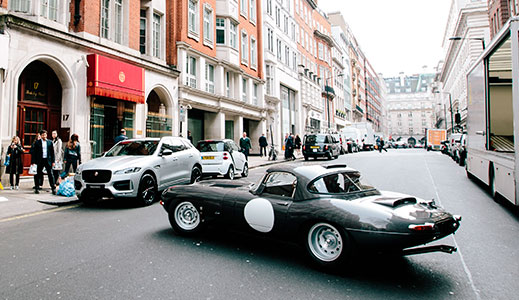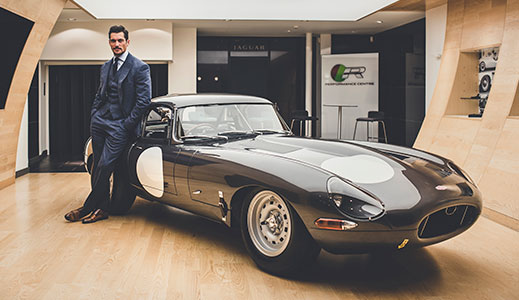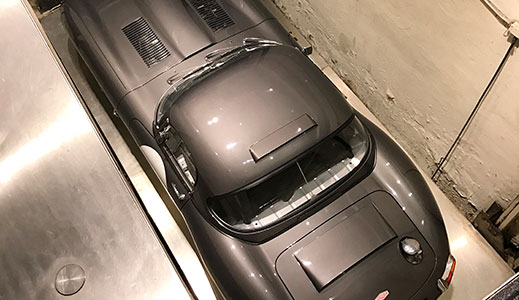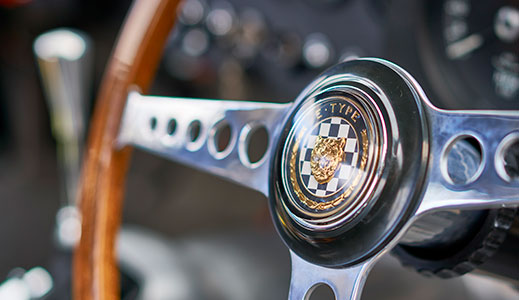Jaguar C-type Visits Stratstone of Mayfair
The owner of Jaguar C-type MDU 212 talks about the iconic
car - the first to win a race with disc brakes in the 1952 Reims 12 Hours.

How did you get involved in today's photoshoot with David Gandy and Norman Dewis at Henry Poole?
I've known both Norman Dewis and Tony O'Keeffe from Jaguar Classic for a number of years. They rang up and asked if I could bring the car down to Savile Row in London for a photoshoot with David Gandy. It's a great pleasure to meet up with Norman again, and to help any friends of Jaguar.
How did you come to buy this car?
I'd known about this car for a number of years. It was owned by a family friend, and my Bentley was looked after by the same mechanic. I used to go and lust after this C-type, and I always badgered the owner about buying it, but he always said no - until one day, about 10 years ago. He said: "If we can agree terms, it's yours."
Have you always wanted to own a C-type?
Absolutely, and this car in particular, because of its unique history and what it has achieved. After Jaguar streamlined the C-types for Le Mans in 1952, and they failed to finish, Sir Stirling Moss, who was a Jaguar factory driver at the time, was particularly keen to win a race. He persuaded Jaguar to put disc brakes on chassis XKC005 - this car - and they went to the Reims 12 Hour race, and won.
It's got a lot of history beyond that too…
It has a wonderful illustrious history. Norman Dewis obviously delivered it. Stirling raced it many times - and every time, apart from one, he won. It was owned by Tommy Wisdom, who drove it from the Jaguar factory to Monaco in 1952, came sixth overall in the race - the first non-Ferrari - then drove it home again. Tony Rolt and Jaguar works mechanic Len Hayden raced it in the 1953 Mille Miglia. Then, Michael Head [the father of former Williams F1 Technical Director, Patrick] won a series of races in the car in Sweden. For me, it's the absolute best of breed. It's just the most incredibly practical, tractable, wonderful car, and it did so much.
You've been very careful to make sure it's still driven regularly on the track and on the road, rather than being kept in a private collection
It's a car we're keen to use. My brother [car journalist] Andrew races it a lot. These things have to be seen out and about. They have to live. I don't think of myself as a museum curator.
Do you have any other Jaguars in your collection?
No. There are many other Jaguars I'd like, but I'm fortunate enough to have what I consider to be one of the best. In terms of what I want from a historic car, this particular C-type pretty much fills all of the criteria.
What's your perception of the Jaguar Lightweight E-type project?
It's tremendous. All power to Jaguar - it's a wonderful thing to have done, and they've done a beautiful job. They're clearly genuine Jaguars, because they've been prepared in the Jaguar factory. And great to see that one has stayed in the UK.
Discover More

A New Home In Mayfair London
The Jaguar Lightweight E-type arrives at Stratstone's London showroom

David Gandy Visits the E-type
Britain's leading male model talks about his passion for style and cars

Exclusive Appearance in Mayfair
YouTube influencer and car enthusiast Shmee150 visits the Lightweight E-type

